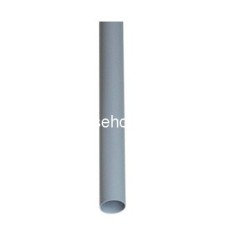
Spraying plastics mop Handle
1.5~1.7 USD
| Min. Order: | 50000 Piece/Pieces |
|---|---|
| Trade Term: | FOB |
| Payment Terms: | L/C, T/T, WU |
| Supply Ability: | 200000pcs/month |
| Place of Origin: | Zhejiang |
Company Profile
| Location: | Ningbo, Zhejiang, China (Mainland) |
|---|---|
| Business Type: | Manufacturer |
Product Detail
| Model No.: | H2 |
|---|---|
| Means of Transport: | Ocean, Air |
| Size: | 7-1/2" |
| Length: | 30cm-40cm |
| Style: | Push |
| Material: | Metal |
| Usage: | Home |
| Broom Head Material: | PP |
| Width: | 35cm-45cm |
| Brand Name: | Karanfil/OEM |
| Color: | red,blue,orange ,purple,white,green |
| Dehydration rate: | 90%-100% |
| Hygroscopy: | less then 10's |
| Production Capacity: | 200000pcs/month |
| Packing: | 1pc/artwork, 48pcs/ctn |
| Delivery Date: | 25-30 days after receive the despoit |
Product Description
Prduct name :Spraying plastics mop Handle

1. Spraying plastics mop Handle Flexible tip and hanger cap ;

1. Spraying plastics mop Handle Flexible tip and hanger cap ;
2. Universal diameter with/ without threaded tip for regular connector ;
3. Standard acme thread ;
4. Food service approved , meets high sanitary standards ; A durable , hygienic handle with nylon standard threaded tip guaranteed not to absorb moisture and bacteria .
Factory picture:

- Traditional wet mops work are preferred for non-wood floors. These mops have rope fibers that resemble a head of hair when turned upside down. If this is your preferred mop, it is a good idea to use a bucket with a mop-wringing attachment that squeezes out the water once the lever is pulled down.Dip and wring out the mop, then place it onto the floor. Apply a little pressure to the mop as you push it back and forth in front of you, then side to side, in an "S" pattern. Flip the mop and repeat, then rinse, squeeze and go over the area to pick up the last dirt. Move on to the next section and continue until the entire floor is clean.
Sponge Mop
- Sponge mops work well on linoleum, wood and tile. These mops provide maximum control over your coverage area--where the mop goes is what it cleans. Yet, these mops have less surface areas to lift and trap dirt.Squeeze the wet sponge mop then push and pull it across the floor in an "M" and "W" pattern. Rinse, then go over the area again. Rinse and continue onto the next section, repeating until the entire floor is clean.
Steam Mop
- Steam mops offer an alternative to the traditional mop-and-bucket method of cleaning. They typically just require distilled water--water without chemicals or metals to build up in the machine--and with a flip of the switch, steam is generated to heat and wash away dirt residues or germs on the floor.Purchase a steam mop that uses washable pads that can be used repeatedly. Steam mops leave less water on the floor, and the heat of the steam actually speeds up the drying process.
Where to Start Mopping
- Start at the farthest corner of the room from the entryway, and mop your way out of the room and not into a corner. This will eliminate excess traffic across your clean floors as they are drying. When the area nearest the door is dry you will know that the starting point and the rest of the room is dry as well.
Factory picture:








